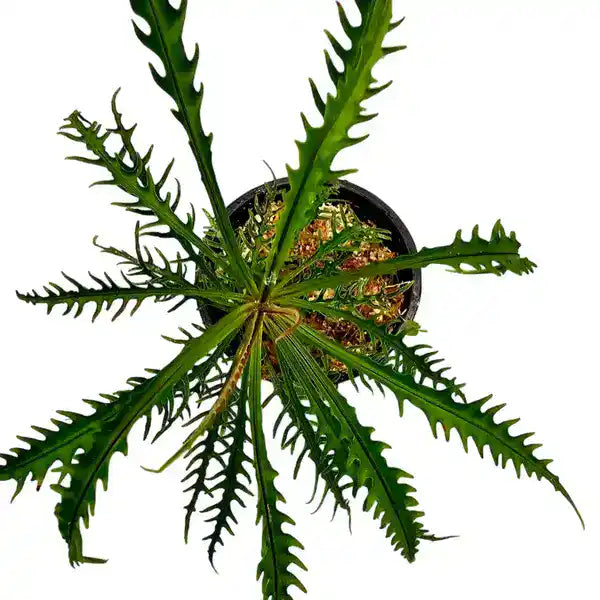
Labisia Starlight
Selling Size : Single Plant | Pot Included | Secure Packing | Free Shipping
Labisia 'Starlight' is a beautiful and somewhat rare cultivar of Labisia, a genus of plants native to the humid rainforests of Southeast Asia. Like other members of the Labisia genus, 'Starlight' is highly prized for its stunning, often dark, and iridescent foliage.
Here's a comprehensive guide care for Labisia Starlight :
Light
Moderate, indirect light is best. In its natural habitat, Labisia grows on the forest floor, where it receives dappled sunlight through the canopy.
Avoid direct sunlight at all costs, as it will scorch the leaves and cause the plant's unique coloration to fade.
Low light can cause the plant to become leggy and lose its vibrant color. An east-facing window or a few feet back from a south-facing window is often a good location.
Watering
Labisia plants need soil that is consistently moist but not waterlogged. They are very susceptible to root rot if the soil stays soggy.
Water when the top inch of the soil feels dry to the touch. It's better to underwater slightly than to overwater.
When you water, do so thoroughly, allowing the excess to drain out of the bottom of the pot. Never let the pot sit in standing water.
Signs of underwatering can include curled or crispy leaves, while yellowing leaves often indicate overwatering.
Humidity and Temperature
High humidity is crucial for Labisia to thrive. A humidity level of 60% or higher is ideal.
Signs of low humidity include browning or crispy leaf edges.
To provide the necessary humidity, you can use a humidifier, place the plant on a pebble tray with water, or grow it in a terrarium or vivarium, which is often the easiest way to meet its needs.
Maintain a warm, stable temperature between 65-80°F (18-27°C). Labisia is very sensitive to cold drafts and sudden temperature changes, which can cause the leaves to drop.
Soil and Fertilizer
Use a rich, well-draining, and airy potting mix. A mix that includes peat moss, perlite, and orchid bark is a good option. This provides a balance of moisture retention and good air circulation for the roots.
Fertilize with a balanced, liquid houseplant fertilizer at half strength once a month during the growing season (spring and summer).
Do not fertilize during the fall and winter when the plant's growth slows down.
Other Tips
Propagation: Labisia can be propagated by dividing the rhizomes, which is best done during the spring or summer.
Pruning: Prune away any dead or yellowing leaves to keep the plant tidy and to encourage new, healthy growth.
Terrarium/Vivarium: Due to their specific humidity and light requirements, many people find that Labisia plants do best in a terrarium or similar enclosed environment. This helps to maintain the high humidity they need to thrive.

